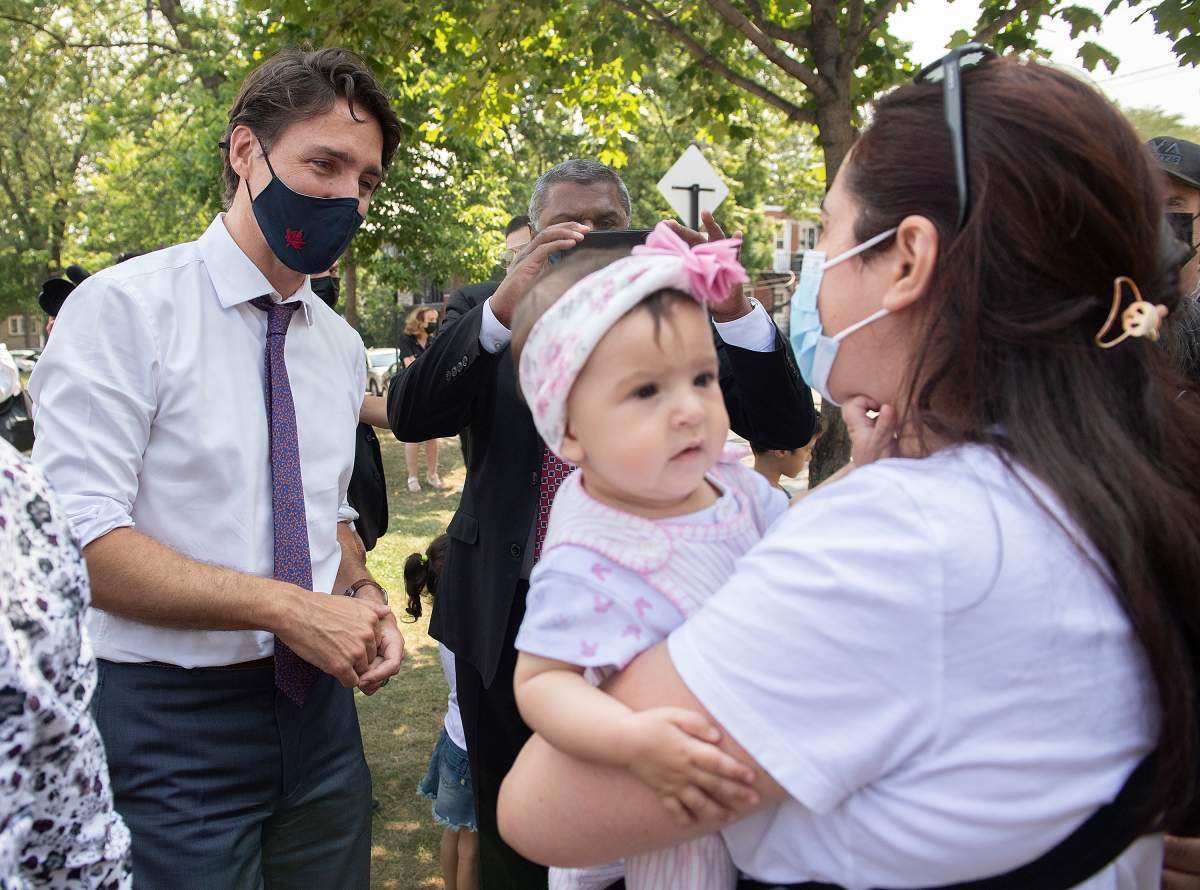Six years ago, Rob Gillezeau watched as a child-care pledge he worked on for the federal New Democrats got pitted against competing policy ideas on where the country should go politically on the issue of daycare.

Now, watching the race as an academic, Gillezeau said the debate has shifted, where a national system is the policy of the NDP and governing Liberals, while the Conservatives are proposing their own progressive tax policy.
The Liberals are pitching voters on their national child-care system outlined in April’s budget — the New Democrats have a near-identical pledge in their platform — and the Conservatives have put forward a refundable tax credit for families with children in care.
Experts say there would be a difference between the competing proposals in how much families with young children would save on child-care costs and when they would see the impacts.
“If you forced me to pick one or the other, I’m obviously going to like the $10-a-day program,” said Gillezeau, an assistant professor of economics at the University of Victoria, “but the Conservative plan, in addition, would actually do an enormous good primarily in the next couple of years when queuing is going to be the most problematic.”
The Trudeau government is aiming to halve the average daycare fee in provinces by the end of 2022, and get to an average of $10-a-day nationally within five years, while also expanding the number of available spaces nationwide.
A fee cut by the end of next year would quickly benefit the over half of families nationwide that use some form of licensed child-care, University of Toronto economist Gordon Cleveland said in a recent interview.

Get breaking National news
How the Liberals plan to bring down fees is through direct subsidies to child care centres. The government has already signed eight funding agreements with provinces worth roughly $12.6 billion in federal funding for almost 144,000 spaces. It has also inked deals with two territories.
An analysis by David Macdonald, senior economist at the Canadian Centre for Policy Alternatives, estimated the national system would save families in 32 cities between about $4,000 and $11,000 annually for an infant space, which are the most expensive, by the end of 2022. (There wouldn’t be any savings for Quebec parents with children in the already subsidized provincial system.)
Building a system is going to take time, meaning that some families may have to wait years to see the results, while others with children in care now may miss out altogether in the wait.
It’s also worth noting experience from Quebec that suggests higher-income households are more likely to land one of the coveted early and few subsidized spots as the system slowly expands.
The Conservative plan doesn’t directly address issues around the supply of child-care spaces. Research suggests demand-side approaches don’t have the effect of bringing down daycare costs and dealing effectively with affordability concerns.
“All demand-side schemes have the same kind of effect,” said Martha Friendly, executive director of the Toronto-based Childcare Resource and Research Unit. “It just doesn’t produce the desired results.”
The Conservative plan would have some immediate impacts by making changes to tax rules by creating a new, refundable tax credit that could pay back up to $6,000 for eligible families in lieu of the current non-refundable tax deduction for child-care expenses.

Michael Smart, a University of Toronto economist and co-director of the Finances of the Nation website, said the Conservative proposal would likely have a net cost of about $2 billion annually, below the $3 billion starting point for the Liberal plan that would then rise to $8.4 billion annually by 2026.
The calculations by Macdonald, the CCPA senior economist, relied on Statistics Canada’s tax modelling software and suggested that only 6,600 families would likely receive the full amount at the end of 2022 under the Conservative plan.
Those households would be low-income and would be spending a high proportion of their earnings on child care to get the full benefit, Macdonald said.
“It’s pretty clear that both (proposals) would yield savings on average to parents, just that the reduction of fees by half is going to be a substantially larger savings for most,” he said.
Macdonald said some families in Ontario and Quebec who use a similar provincial deduction may not see any change at all to their savings under the Conservative plan. Provinces are likely to roll back the value of their own deduction if the federal government is implementing its own, he said.
Parents can currently claim up to $8,000 per child under age seven in child-care expenses to lower their tax burden, which can benefit higher-income households that would owe taxes.
Rather than create something new, some economists and even Scotiabank CEO Brian Porter have argued the existing tax deduction should be expanded.
“The existing system that we have makes sense based on tax-fairness principles. If the first thing you have to do to go and get your job and work is to pay for child care, you should be allowed to deduct those costs,” said Smart of the University of Toronto.

While the Liberals, New Democrats and Conservatives have different visions for their plans, and look to use them for electoral gains, Gillezeau said the proposals don’t necessarily need to compete, but could work together.
“I do see these policies as going nicely hand-in-hand,” he said.
“By having a generous benefit that is progressive, that is accessible to people who are unable, not through lack of desire but because of the length of the queue to get into some spaces, this means that they’re going to get supported.”







Comments